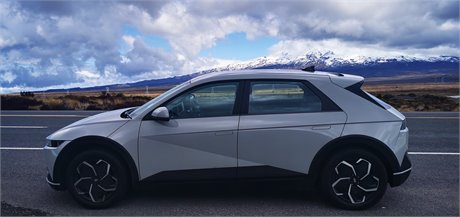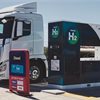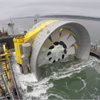The future of motoring is quiet, fast, and comfortable – but is it sustainable?
23 Dec 2022
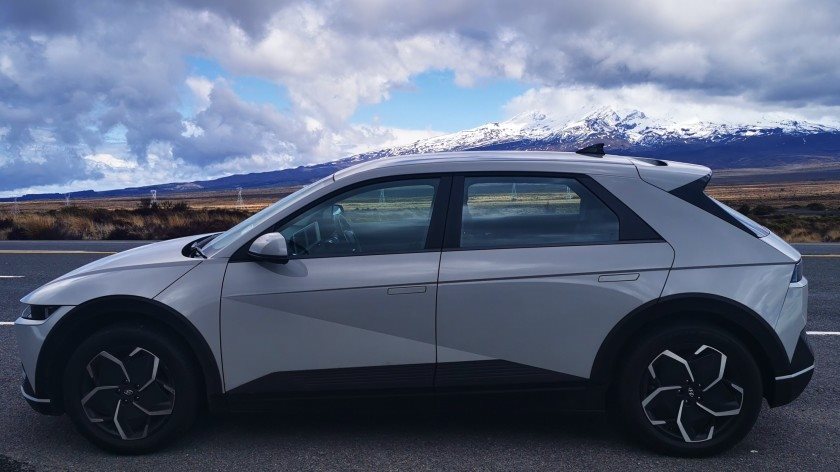
By Jeremy Rose
I’ve driven in the future and it’s quiet, has effortless acceleration, and is supremely comfortable – but it doesn’t make economic or environmental sense for me to buy a Hyundai Ioniq 5.
I’m trying to keep my flying to a minimum so when I needed to get from Wellington to Auckland for the recent Climate Change and Business conference my first thought was, I’d catch the train. But with just three trains a week that wasn’t a practical solution.
Next on my list of climate friendly inter-city travel was a test drive in an EV. Hyundai kindly agreed to loan me an Ioniq 5 – this year’s New Zealand and World car of the year.
There’s a lot to like about Hyundai Ioniq 5. Many of those things will be true of any new EV: the absence of engine noise, the instantaneous torque that results in sports car-like acceleration, and regenerative braking.
The quality finish, stylish design and smorgasbord of onboard controls are no doubt standard fare on cars that cost almost one and a half times New Zealand’s median income.
The Ioniq 5 58kWh 2-wheel drive sets you back $79,990 – just $10 shy of the cut off point for the $8,625 clean car discount.
My own car is a petrol-powered but fuel efficient 2021 Suzuki Ignis – which cost less than a third of the Hyundai – and is now eligible for a clean car discount of $2129.48.
It’s frugal, quirky, fun to drive, and relatively comfortable. But there’s a reason it costs $56k less than the Hyundai.
Swapping the Ignis for the Ioniq is, I guess, not dissimilar to how someone feels when they’re bumped up from cattle to business class on an international flight. There’s nothing wrong with the “economy” class but there’s a lot right in business. That extra leg room, the quality and finish of the seats, more choice of entertainment etc. The destination is the same, the travel time is the same, but the ride is very different.
The Ioniq’s comfort is not just a comparative thing. German car magazine Auto Zeitung rated it first equal for comfort with the Mercedes EQB in a comparison of five electric SUVs.
The first thing that struck me when I picked up the Ioniq from the showroom in Lower Hutt was the smoothness of the ride. It’s quiet and remains quiet no matter how hard you accelerate.
The second was feeling myself being nudged back to the centre of the lane. It was the first time I’d driven a car with lane keeping assist, and that along with a beeper that goes off if you cross the white line was a like having a particularly twitchy driving instructor in the passenger seat.
As a regular cyclist I’m a fan of anything that alerts drivers that they’re drifting across the solid white line on the side of the road. Others will condemn it as yet another nanny-corporate trying to keep them on the straight and narrow.
Heading out of Wellington and up the Ngauranga Gorge, the gulf between the Ignis and Ioniq in terms of power, noise level, and comfort was at its starkest.
The Ignis zips up the gorge at the 80km/h speed limit with no real problem, but the noise of the engine goes up a few decibels and I doubt I’d choose to go any faster if the speed limit was increased.
In the Ioniq there’s no increase in engine noise – there isn’t any – and you have to keep eye on the speedometer to avoid being snapped by the gorge’s hyperactive speed camera.
Wellington to Taihape is a 231km drive and with the lower specced version of the Ioniq having a range of up to 384km, I figured that was a good place to aim to have lunch.
Fifty or so kilometres out of Taihape I looked at the estimated range and it was reading just 61km. So, it was with a sense of relief that I spotted a sign for the Duke’s Roadhouse Café with an EV charging symbol on it.
I pulled off State Highway 1, but while there were four Tesla only chargers there was just one general one and it was occupied.
 |
| On the return journey I nabbed the only non-Tesla charger at the cafe |
Never mind, I thought, I can get to Taihape with 10 km to spare. That 10 km whittled down to five by the time I reached the gumboot throwing capital of the world, and my range anxiety levels had gone through the roof.
The New World Supermarket in Taihape has a couple of chargers and I pulled up and plugged in.
I returned about an hour later and the ChargeNet app had billed my credit card $24.50.
Not wanting another dose of chronic range anxiety, I decided to stop in Taupo and then Hamilton on my way to Helensville - a 453km drive away.
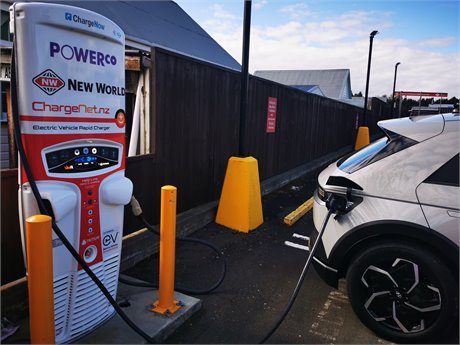
There was a bit of faffing around in Taupo where the ChargeNet site I’d planned on stopping at was out of action due to road works and the next one was fully occupied – adding a good half hour to my charging time. Cost of the charge: $12.46. Next stop Hamilton: $16.87.
I’d left Wellington with close to a full charge and arrived in Helensville with about 50%. Charging from home is a lot cheaper than the fast charges.
So, let’s say the trip cost me $70 in electricity all up compared to about $86 in petrol in the Ignis. (It has averaged 4.9 litres per 100km during its first 10,000km.)
Currently EVs pay no road user charges – but that’s not going to last forever, and assuming they pay the same as diesels do currently that would add another $47 to the journey.
It’s a far more comfortable and enjoyable trip in the Ioniq but it’s only cheaper due to a government subsidy.
But why do I say it doesn’t make environmental sense? Surely the EV produces less CO2?
Absolutely. Assuming the Ignis achieved 4.7 litres per 100km on the open road drive it would emit about 78kg of C02 on a 678km journey.
Calculating the CO2 emissions of an EV is a far more complicated task.
I asked emeritus professor and transport expert Ralph Sims to help me out. It turns out I should have looked at the car’s trip indicator to see how many kWh it was consuming. In the absence of that information Sims made an educated guess.
“My BMW i3 typically consumes around 13 kWh/100km on a long trip. The Ioniq is heavier. So let’s be conservative and assume consumption was 15kWh/100 km.
“Given this was grid electricity, the emissions factor can be taken as 92g CO2/ kWh based on average mix at around 82% renewables (with geothermal CO2 included).
“Therefore assuming the 678 km journey consumed 102 kWh, the total CO2 emitted during the electricity generation to meet that demand would be around 9.4 kg.
“So roughly one tenth the emissions from a petrol/diesel car of a similar size”
Sims says a true comparison would need a full life cycle analysis to be carried out – “needing a PhD study!”
“Having said that, BMW claim my car is manufactured in a factory in Frankfurt using 100% renewables and since it has a carbon fibre chassis, roof etc. then some carbon is sequestered in the vehicle structure. But then there are the batteries versus the engine.”
According the Toitū travel calculator the flight from Wellington would have added 147kg CO2 to my carbon footprint.
In its first year my Ignis travelled about 10,000 and emitted about 1.2 tonnes of C02, adding about $100 in carbon charges at the pump. So owning the Ioniq would reduce my carbon footprint by about one tonne a year (though, as market purists will be quick to point out, it won’t reduce the country’s emission because fuel is in the ETS.)
How much would investing a similar amount, in say, double glazing my apartment, installing solar power panels, buying more energy efficient appliances or donating money to any number of environmental causes save? I’ve got no idea but all of them seem likely to avoid far more emissions than buying an EV.
The Ioniq is a beautiful car and I suspect if I owned it, I would find excuses to travel by car, rather than train or bus, more often than I do now.
And even if that wasn’t the case, it makes no sense when EVs are in short supply for someone like me with low annual mileage to have one parked in the garage.
It would be far better for EVs to be in the hands of people, or better still companies, who have no choice but to clock up high mileage.
In 1919 American journalist Lincoln Steffens visited the Soviet Union and wrote: “I’ve seen the future and it works.”
Fifty years later the Soviet Union produced its first Lada and it was becoming increasingly obvious the future was a dead-end.
EVs generate a Steffens-like zeal for the new. But, like the Soviet Union, EVs might not live up to the hopes of their most ardent supporters.
I reckon the hefty subsidies currently going to a relatively small number of individuals to drive supremely comfortable cars would be better spent on allowing us all to travel in comfort on trains and buses.
(First published 18 November, 2022.)
print this story
Story copyright © Carbon News 2022

